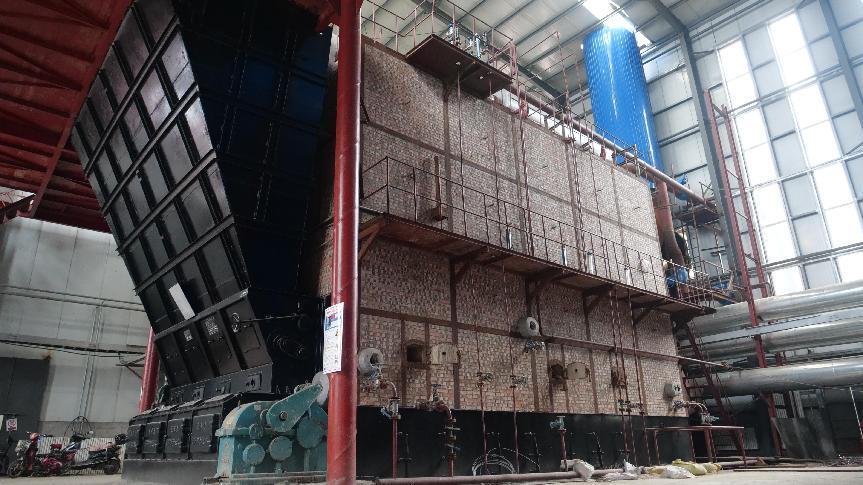
Дек . 15, 2024 15:01 Back to list
High Efficiency Steam Boiler for Industrial Applications and Energy Management Solutions
High Pressure Steam Boiler An Overview
High pressure steam boilers are an essential component in various industrial processes and applications. These boilers are designed to generate steam at pressures significantly higher than atmospheric pressure, typically exceeding 15 psi (pounds per square inch). The steam produced is used for a range of purposes, including power generation, heating, and process applications in industries such as chemical, petrochemical, food processing, and paper manufacturing.
Types of High Pressure Steam Boilers
High pressure steam boilers can be broadly categorized into two main types fire-tube boilers and water-tube boilers.
1. Fire-Tube Boilers These boilers consist of a series of tubes through which hot gases from combustion pass. The water surrounds these tubes, and as the hot gases rise, the heat is transferred to the water, generating steam. Fire-tube boilers are generally simpler in design, easier to operate, and require less maintenance. However, they are limited in the amount of steam pressure they can generate and are typically used in lower-pressure applications.
2. Water-Tube Boilers In contrast, water-tube boilers contain water-filled tubes that are heated by hot gases from combustion. The design allows for steam generation at much higher pressures, making these boilers more suitable for high-pressure applications. Water-tube boilers are favored for their efficiency and ability to handle fluctuating steam demands.
Operating Principles
The operation of a high pressure steam boiler begins with the combustion of fuel, which produces hot gases. These gases flow through the boiler system, transferring heat to water and converting it into steam. The steam generated is then collected in a steam drum, where it is separated from any entrained water before being directed to the intended application.
The boiler is equipped with various safety and control mechanisms to ensure safe and efficient operation. These include pressure gauges, safety valves, level controls, and temperature sensors. The pressure within the boiler is carefully monitored and controlled to prevent dangerous situations such as overpressure. The safety valves act as a fail-safe, releasing steam if the pressure exceeds a preset limit.
Advantages of High Pressure Steam Boilers
High pressure steam boilers offer several advantages that make them ideal for industrial applications
high pressure steam boiler

1. Energy Efficiency By operating at higher pressures, these boilers can achieve greater thermal efficiency compared to low-pressure systems. Higher pressure steam contains more energy, allowing for the efficient transfer of heat in processes.
2. Versatility High pressure steam can be used for various applications, from driving turbines in power plants to providing heat in a multitude of manufacturing processes.
3. Space-Saving Design Water-tube boilers, in particular, tend to have a smaller footprint compared to fire-tube boilers, making them suitable for locations with limited space.
4. Improved Response Time High pressure steam systems can quickly adjust to changes in steam demand, maintaining operational efficiency.
Applications
High pressure steam boilers are used in a wide range of industries
- Power Generation Steam turbines in power plants utilize high pressure steam to generate electricity, making these boilers a critical part of the energy sector. - Chemical Processing In chemical plants, high pressure steam is often required for reactions that demand elevated temperatures.
- Food Processing Steam is used for cooking, sterilization, and cleaning in the food industry, ensuring product safety and quality.
- Paper Manufacturing The paper industry requires steam for various processes, including drying and pressing.
Conclusion
High pressure steam boilers are a vital element in many industrial processes, providing efficient heat and energy solutions. Their design and operation principles ensure safety and efficiency, making them suitable for high-demand applications. As industries continue to evolve, the importance of these boilers remains significant, driving advancements in engineering and technology to enhance performance and sustainability. Understanding the types, advantages, and applications of high pressure steam boilers is essential for professionals in the field, ensuring that they can make informed decisions regarding their operation and maintenance.
-
Efficient Biomass Fired Hot Water Boiler | AI Heating Solution
NewsAug.01,2025
-
High-Efficiency Gas Thermal Oil Boilers | HPT Models
NewsJul.31,2025
-
Oil Fired Hot Water Boilers Sale - High Efficiency & Affordable
NewsJul.31,2025
-
High-Efficiency Commercial Oil Fired Steam Boiler for Industry
NewsJul.30,2025
-
High-Efficiency Biomass Fired Thermal Oil Boiler Solutions
NewsJul.30,2025
-
High Efficiency Gas Fired Thermal Oil Boiler for Industrial Heating
NewsJul.29,2025
Related PRODUCTS






















